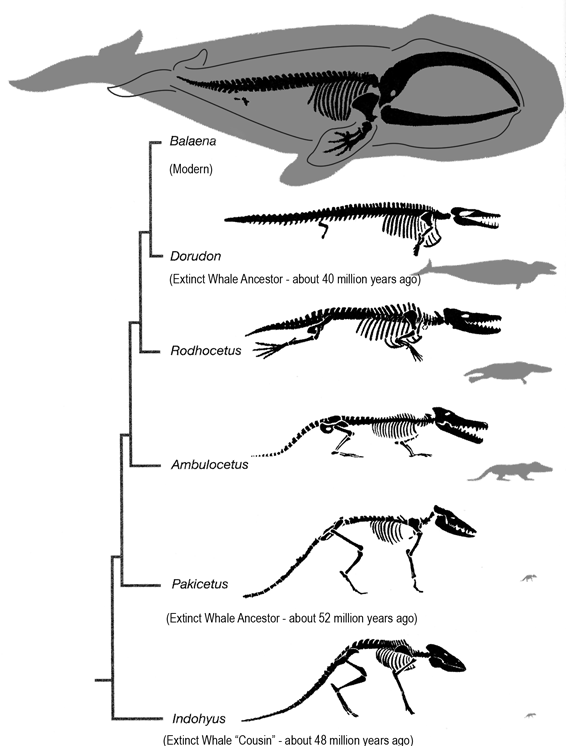A diagram that shows evolutionary relationships and shared traits between organisms.
Cladogram / Branching Tree / Phylogenic Tree
A specific characteristic of an individual that can be determined by genes, environmental factors or by a combination of both. These can be qualitative (such as eye color) or quantitative (such as height).
Traits
Which two animals both have live births?
Elephant and Kangaroo
These fossils have characteristics of both modern and ancient organisms and are considered links between them.
Transition fossils
The process by which organisms change over time
Evolution
What is a Common Ancestor?
An early type of organism from which others have evolved from
Which trait do the crocodile and frog share?
four legs
The shapes and arrangement of the parts into a pattern of organization. (How something is built)
Body Structure
Different versions of the same trait within a species.
Ex. Some African elephants are normally born with tusks and some are normally born without tusks.
Variation
1. When referring to evolutionary relationships, what do we mean by something's function?
2. What are two examples of functions that limbs provide for an animal?
1. The purpose of something or a particular kind of work that it does.
2. Any two: walking, running, swimming, flying, grabbing, eating
Which animal shares the least amount of DNA with the elephant? Why?
The angel fish because they are the farthest away on the cladogram and therefore share the fewest number of traits in common.
Scientists can compare the genes of different species by comparing this to determine evolutionary relationships.
DNA
Similar structures in the body that related species have inherited from a common ancestor.
Homologous Structures
Briefly explain what Natural Selection is.
The process by which individuals that are better adapted to their environment are more likely to survive and reproduce than other members of the same species
Can it be concluded that all of the animals in the diagram share a common ancestor? Why?
Yes, because they have homologous structures. They have the same number and patterns of bones in their limbs (humerus, radius, ulna, carpal, metacarpal, and phalanges). This shows that they all likely inhereted the DNA for that pattern of bones from a common ancestor.
Inferences can be made about evolutionary relationships by comparing the _________ ____________________ of embryos.
Early Development
The diagram below represents part of the fossil record for the evolution of modern whales. What are TWO conclusions that can be drawn about the relationship between the modern whale and extinct organisms?

1. They all share a common ancestor.
2. The whale has changed over time.